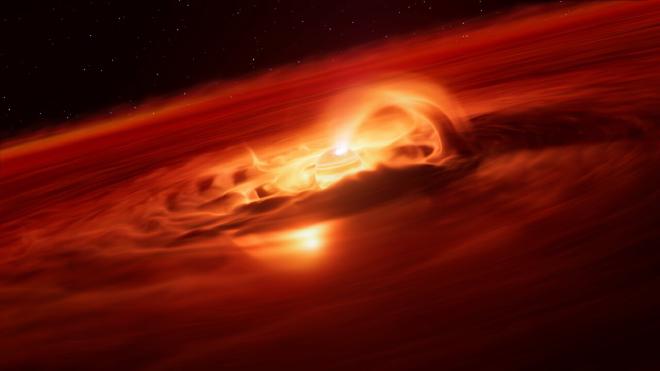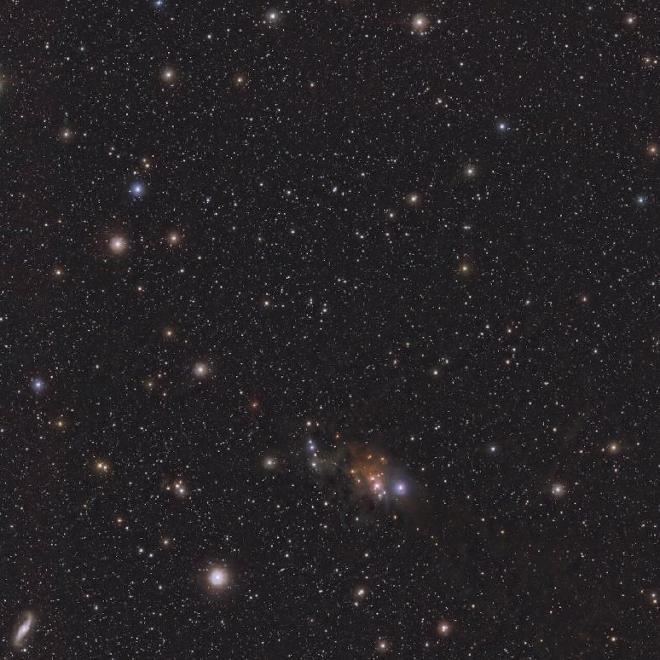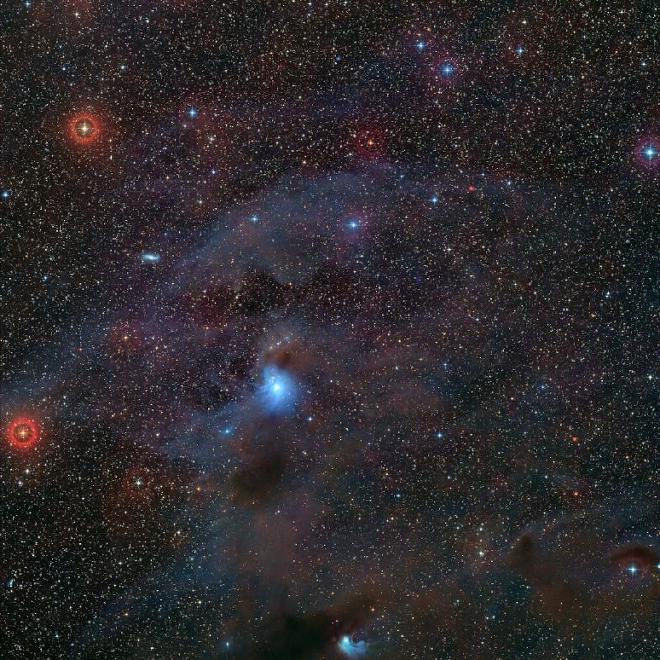

“People may think of planets as quiet and stable worlds, but with this discovery we see that planetary-mass objects freely floating in space can be exciting places,” said Víctor Almendros-Abad, an astronomer at the Astronomical Observatory of Palermo, National Institute for Astrophysics (INAF*), Italy and lead author of the new study.


By August 2025, the planet was accreting about eight times faster than just a few months before, at a rate of six billion tonnes per second! “This is the strongest accretion episode ever recorded for a planetary-mass object,” said Almendros-Abad. The discovery, published today in The Astrophysical Journal Letters, was made with the X-shooter spectrograph on ESO’s VLT, located in Chile’s Atacama Desert. The team also used data from the James Webb Space Telescope, operated by the US, European and Canadian space agencies, and archival data from the SINFONI spectrograph on ESO’s VLT.
Astronomers have found an intense ‘growth spurt’ in a rogue planet –– a planet that doesn’t orbit a star. Observations with ESO’s Very Large Telescope (VLT) reveal that this free-floating planet is eating up gas and dust from its surroundings at a rate of six billion tonnes a second, the strongest ever found for a planet of any kind. This video summarises the discovery. Credit: ESO. Direction: Angelos Tsaousis y Martin Wallner. Edition: Angelos Tsaousis. Web & technical support: Rachel Yumi Shida & E. Arango. Text: Malika Nora Duffek. Music: Stellardrone – Better of. Photos: ESO, Luis Calçada, Martin Kornmesser, Angelos Tsaousis, Christoph Malin, Digitized Sky Survey 2, Meingast et al. Scientific consultants: Paola Amico, Maria Lyubenova. Based on V. Almendros-Abad et al. investigation, ApJL.
“The origin of rogue planets remains an open question: are they the lowest-mass objects formed like stars, or giant planets ejected from their birth systems?” asked co-author Aleks Scholz, an astronomer at the University of St Andrews, United Kingdom. The findings indicate that at least some rogue planets may share a similar formation path to stars since similar bursts of accretion have been spotted in young stars before. As co-author Belinda Damian, also an astronomer at the University of St Andrews, explained: “This discovery blurs the line between stars and planets and gives us a sneak peek into the earliest formation periods of rogue planets.”
This video zooms in on Cha 1107-7626, located about 620 light-years away in the constellation Chamaeleon. This rogue planet is 5-10 times more massive than Jupiter and doesn’t orbit a star. This video zooms in on Cha 1107-7626, located about 620 light-years away in the constellation Chamaeleon. This rogue planet is 5-10 times more massive than Jupiter and doesn’t orbit a star. Credit: ESO/L. Calçada, M. Kornmesser/N. Risinger (skysurvey.org)/Digitized Sky Survey 2/Meingast et al. Music: Azul Cobalto
This artist’s animation shows Cha 1107-7626. Located about 620 light-years away, this rogue planet is about 5-10 times more massive than Jupiter and doesn’t orbit a star. Credit: ESO/L. Calçada, M. Kornmesser
Free-floating planets are difficult to detect, as they are very faint, but ESO’s upcoming Extremely Large Telescope (ELT*), operating under the world’s darkest skies for astronomy, could change that. Its powerful instruments and giant main mirror will enable astronomers to uncover and study more of these lonely planets, helping them to better understand how star-like they are. As co-author and ESO astronomer Amelia Bayo explained that “the idea that a planetary object can behave like a star is awe-inspiring and invites us to wonder what worlds beyond our own could be like during their nascent stages.”
This artist’s animation shows Cha 1107-7626. Located about 620 light-years away, this rogue planet is about 5-10 times more massive than Jupiter and doesn’t orbit a star. Credit: ESO/L. Calçada, M. Kornmesser
Citation #
- The study “Discovery of an Accretion Burst in a Free-Floating Planetary-Mass Object” was published in The Astrophysical Journal Letters The team is composed of V. Almendros-Abad (Istituto Nazionale di Astrofisica - Osservatorio Astronomico di Palermo, Italy), Aleks Scholz (School of Physics & Astronomy, University of St Andrews, United Kingdom [St Andrews]), Belinda Damian (St Andrews), Ray Jayawardhana (Department of Physics & Astronomy, Johns Hopkins University, USA [JHU]), Amelia Bayo (European Southern Observatory, Germany), Laura Flagg (JHU), Koraljka Mužić (Instituto de Astrofísica e Ciências do Espaço, Faculdade de Ciências, Universidade de Lisboa, Portugal), Antonella Natta (School of Cosmic Physics, Dublin Institute for Advanced Studies and University College Dublin, Ireland) Paola Pinilla (Mullard Space Science Laboratory, University College London, UK) and Leonardo Testi (Dipartimento di Fisica e Astronomia, Università di Bologna, Italy).
Contact [Notaspampeanas](mailto: notaspampeanas@gmail.com)

